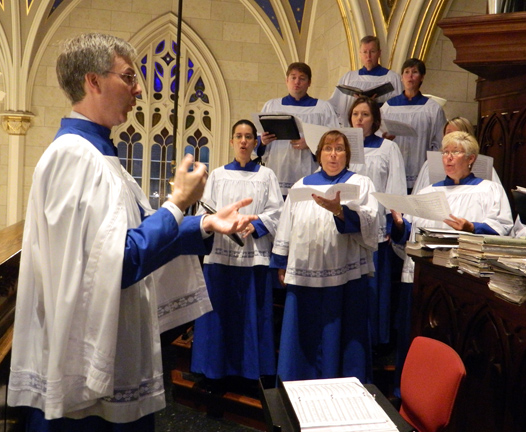 Now that the HHS contraception mandate has brought the
contraception issue into focus for Catholics, it’s time to hone in on what’s
necessary for a renewal of sexual morality and marital chastity and fruitful
multiplication…don’t you think?
Now that the HHS contraception mandate has brought the
contraception issue into focus for Catholics, it’s time to hone in on what’s
necessary for a renewal of sexual morality and marital chastity and fruitful
multiplication…don’t you think?Consider this quote from the preface to The Case Concerning Catholic Contraception, where author Michael Malone stated:
When Pope Paul VI lamented
toward the end of his pontificate that “the smoke of Satan has entered the
sanctuary”, what man among us could disagree? And since the Church is based on
the fundamental structure of the family, it is in relation to the sanctuary of
the home itself that such diabolical disorientation has done the most serious
damage.
I think there are good reasons for checking our morality
meter on this subject.
Note: I am addressing only
the use of periodic continence for “spacing births”, not the use of NFP or
NaPro for achieving pregnancy.
That said…let’s start with this:
There have been statistics thrown around about the
percentage of Catholic women who use some form of artificial birth control.
There are also figures thrown around as estimates of the percentage of Catholic
couples using NFP (whether for achieving or avoiding pregnancy).
Whatever.
The stunningly obvious fact is that Catholic families –
which have been historically large – are now about the same size as the
families of the general population.
I would venture to guess that this reduction in average
family size for Catholics has come about because of an almost overpowering contraceptive
mentality in our society which has resulted in many Catholics using artificial
contraception and sterilization, against
the teachings of the Church.
 But why did good Catholics start going against the teachings
of the Church on contraception? I suspect we can pin the blame on a very vocal group
of dissident theologians and others who voiced immediate disagreement,
disappointment, and resentment when they learned that Pope Paul VI, in Humanae Vitae, had decreed that
artificial contraception was still
immoral and forbidden. This frontal attack by dissidents led to a weakening of
that teaching. And that led to many Catholics using artificial contraception.
NFP, I think, eventually emerged as a response to the fact that so many
Catholics were illicitly and immorally contracepting right along with their
non-Catholic peers.
But why did good Catholics start going against the teachings
of the Church on contraception? I suspect we can pin the blame on a very vocal group
of dissident theologians and others who voiced immediate disagreement,
disappointment, and resentment when they learned that Pope Paul VI, in Humanae Vitae, had decreed that
artificial contraception was still
immoral and forbidden. This frontal attack by dissidents led to a weakening of
that teaching. And that led to many Catholics using artificial contraception.
NFP, I think, eventually emerged as a response to the fact that so many
Catholics were illicitly and immorally contracepting right along with their
non-Catholic peers.
So let’s consider the evolution of the Church’s teaching on
the duty to procreate, the use of periodic continence to limit/space births,
and the use of NFP.
In 1930, Pope Pius XI published his encyclical, Casti Connubii, which was essentially a
response to the Lambeth Conference’s approval of the use of birth control. Casti
Connubii stood by the primarily procreative end of marriage, but
acknowledged that:
…there
are also secondary ends, such as mutual aid, the cultivating of mutual love,
and the quieting of concupiscence which husband and wife are not forbidden to
consider…
Still,
there was the ever-present caveat:
…so
long as they are subordinated to the
primary end and so long as the intrinsic
nature of the act is preserved.
In 1951, Pope Pius XII’s addressed Italian midwives in his Allocution to Midwives; Fr. William
Gardner, in his excellent article Purity
Honors Creativeness, notes that this document
…seems to be the first papal
document that sanctions (albeit
conditionally) the use of periodic continence…Pius XII affirmed that married
couples have a positive duty to provide
children for the propagation of the human race, a responsibility owed to
the State, to the Church, and to God
Himself. However, the Pope also concluded that couples may have recourse to periodic
continence in order to avoid conception provided that there exist “sufficient and secure moral grounds”
and that “no artificial means are used to hinder the procreation of new life.”
(my emphases)
Fr. Gardner also mentions that the Allocution reaffirms that procreation is
the primary end of marriage, and that the “unitive” end is subordinated to it. In
addition,
…[The Pope]
further notes that all the personal,
intellectual, and spiritual enrichment that derive from conjugal life has
ultimately been placed by the will of the Creator at the service of posterity.
In 1968, Pope Paul VI promulgated Humanae Vitae, which again affirmed that periodic continence may be
permitted for serious reasons, though the language seems a bit more liberal
here:
If therefore there are well-grounded reasons for spacing
births, arising from the physical or
psychological condition of husband or wife, or from external circumstances, the Church teaches that married people may
then take advantage of the natural cycles… (HV,
16)
But this document also reiterates that the primary end of
marriage is procreation in fairly strong language:
…[Parents] are not free to act as they choose in the service of transmitting life, as if it were wholly up to them to decide what is the
right course to follow. On the contrary,
they are bound to ensure that what they do corresponds
to the will of God the Creator. The very
nature of marriage and its use makes His will clear, while the constant
teaching of the Church spells it out. (HV,
10)
It seems to me that within these documents, there is a
progressive movement toward more permissive language related to periodic
continence. Still, each document reaffirms that abstaining from sexual
relations during the woman’s fertile times should be for “serious reasons”, and
that the primary reason for marriage is procreative.
Now, it also seems to me that there has been a progressive
movement amongst the faithful toward focusing more on the fact that periodic continence is licit, and less
on the idea of “serious reasons” (which they say should surely be left up
to the couple and their pastor to determine), and even less on the
procreative end of marriage and the duty to have a “generous” number of children.
 |
| The other extreme...so sad... |
Somehow, I am reminded of the answer Jesus gave to the
Pharisees about why Moses allowed husbands to divorce their wives, but Jesus
forbade it: “Because of the hardness of your hearts Moses allowed you to
divorce your wives, but from the beginning it was not so” (Matthew 19:8). In a
similar way, it seems that our Holy Fathers began to allow periodic continence
as a means of limiting births because of the “hardness of heart” that was
coming over the Catholic faithful as they turned toward “modern” values at the
expense of their large numbers of children.
To attach subjective requirements for the permissible use of periodic continence
also seems to validate the point that this is a matter of Church discipline, a matter of positive law, rather
than something built into the nature of the act of sexual intercourse.
Furthermore, since this is a matter of Church discipline, it is conceivable that the permission (or
dispensation) could be reversed.
Should the
permission be reversed? Well, let’s ask ourselves this: What are the “fruits”
of this development of a view of periodic continence being permissible for “serious
reasons”? We are not seeing an increase in the birthrate among Catholics, are
we?!
By the way, I do recognize that some couples
struggle with infertility or other issues that may be kept private, and that a
small family cannot be taken as an indication of whether or how a couple is
contracepting. So stick with me; hear me out.
I think that it is quite likely that many Catholic couples
who, in the last 50 years or so, turned to the use of artificial contraception,
used the relatively new permission for periodic continence as an excuse for
their behavior. After all, they may have reasoned, if the Church allows periodic
continence to be used for avoiding pregnancy, what’s wrong with going with
something a little more “convenient”? I have had more than one woman, open to
using NFP, ask me, “So how is that really different from artificial
contraception?” (There is a
difference, but it is telling that the unbiased newcomers to the idea seem to
recognize a similar line of contraceptive thinking in both.)
What I’m getting at is this: even if periodic continence is
licit (and it is, in some circumstances),
it keeps getting liberalized in response to pressure from the secular world –
to the point that it is becoming institutionalized as NFP. The concept of
conscience has become weakened by the moral relativist climate of our society,
and I think that blinds people to the contraceptive mindset around NFP.
And that’s why I think we need to talk about NFP. We need to
investigate whether periodic continence has turned the critical question from
discernment of whether to AVOID pregnancy to one of whether to ACCEPT pregnancy.
There’s a big difference. The first, I think, emphasizes God's will, the second emphasizes our own.
Fr. Gardner makes a distinction between behavior that is licit versus behavior that is virtuous. Periodic continence, he says,
is licit, but not virtuous.
I ask those who defend and promote NFP: are you
willing to truly examine that difference (between licit and virtuous), and to
consider whether we should be helping couples move toward virtuous behavior, or
simply licit behavior? Are you willing to truly examine whether “family
planning” should be on human terms, or whether it should be more “providential”?
If yes, then let’s discuss this
as mature adults.
Related:
On Clarifying the Licit Use of NFP
What's Wrong with NFP?
Abuses of NFP and the Duty of Motherhood
Comments are welcome, but please attach a name somewhere, and please do not resort to name-calling. If you want a private conversation, feel free to email me at drjayboyd@msn.com.
Thanks.
Related:
On Clarifying the Licit Use of NFP
What's Wrong with NFP?
Abuses of NFP and the Duty of Motherhood
Comments are welcome, but please attach a name somewhere, and please do not resort to name-calling. If you want a private conversation, feel free to email me at drjayboyd@msn.com.
Thanks.























